Tastes are apparently not discussed. And good, because in the past these tastes were simply horrendous.
As always, all items in the TOP10 ranking are based on the articles we publish. This time we decided to show how different from the modern one was the perception of beauty a century ago.
Not so long ago beauty meant…
8. Body in a corset
The perfect body from the turn of the century had completely unnatural proportions. They were achieved with the help of the art of tailoring. Ladies of the upper class and the middle class wore high and long corsets that gave the figure an artificial curve and reliably modeled the posture.
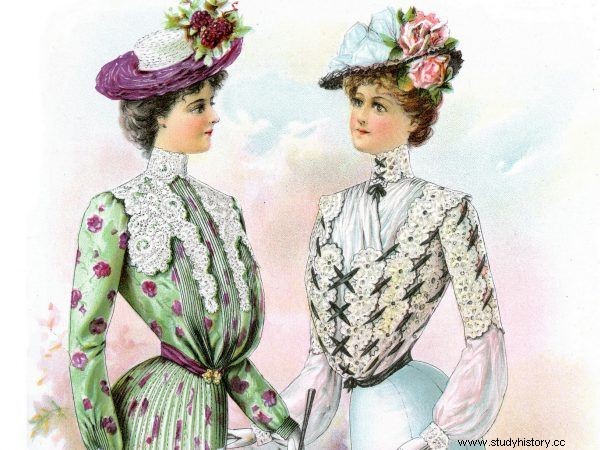
Wearing a tight corset all day must have been painful. But what is not done for beauty (source:public domain).
Putting on a corset was not a pleasant moment, but a painful chore. The ladies clad in "armor" resembled medieval knights in a way. They, too, were struggling to move, and for them it was quite a challenge for them to draw air into their lungs.
Apart from the fact that the corset held the breasts and pushed them upwards, it also made the waist slimmer and kept the back absolutely straight. By doing all of this, he was wreaking havoc on the body. Laced up with all his strength, he impossibly squeezed his internal organs (read more about it) .
7. Walking in a Deadly Skirt
Today we have a choice - in pants or in a dress. But more than a century ago, the key to the admired appearance was only one garment:a crinoline, a kind of skirt made of fabric stretched over metal hoops or hairs. It has been popular since about 1850.
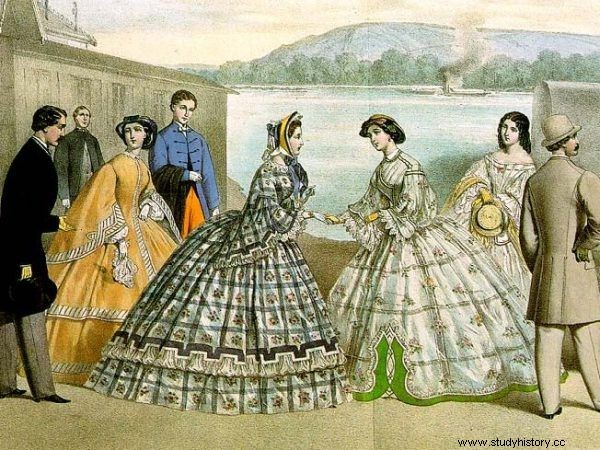
Crinolines not only made it difficult to whisper gossip in your ear. This nice meeting in idyllic circumstances could easily end in a fire. It is easy to see four potential foci of inflammation ... Picture from the magazine "Wiener-Moden-Zeitung" from July 1862 (source:public domain).
Undoubtedly elegant, the crinolines, however, were extremely impractical due to the amount of space they took up. Ladies were not allowed to sit in armchairs in them, or to walk through doors, walk in crowded places, travel by train or public transport, or even kneel down! And the gentlemen complained that they could no longer give their companions their arm during a walk because their dress was in the way.
Not only that, on windy days the crinoline was easily blown upwards. But the worst part was the ignition hazard It is hardly surprising when the lady did not even see where the hem of her dress was. More than one lady has become a victim of the crinoline fashion. Literally! In England, in just a decade, three thousand women wearing crinolines were burned alive (read more on this topic) .
6. Unwashed hair
Cleanliness is the basis of health and the soul of the toilet, so a lot depends on keeping your hair clean - we read in "The Guide for Ladies or Advice for the Fair Sex" from 1842. However, the rest of the argument does not sound so familiar. Well, to keep clean, do not use water and shampoo, but ... a set of combs and brushes!
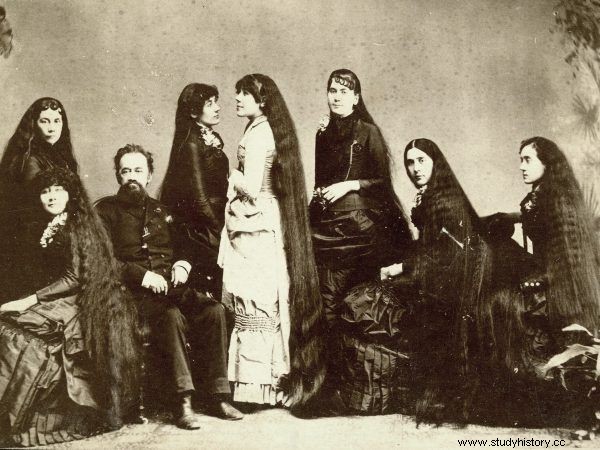
Gorgeous long hair? It may seem so from a distance, but up close it would be clearly visible that they are greasy and unwashed for a long time (source:public domain).
The hair had to be carefully combed with a comb every morning so as not to tear or break it. They were then "cleaned" with a soft bristle brush. And how often did you have to resort to water and soap in order not to deserve to be called dirty? As part of normal hygiene measures, it was recommended to wash your hair only… once a month!
Only Antoine Cierplikowski, a hairdressing virtuoso from Poland, started washing women's hair before cutting and combing. Dirty, sticky with pomades and repulsing with its rancid scent of shag they disgusted him so he refused to deal with clients who refused to wash their heads (read more on this) .
5. Burn on the head
Long, greasy hair looked the most beautiful in locks and clearly wavy. But in the interwar period, there were no straighteners and curling irons with protective coatings. There were also no products protecting the hair structure against excessive heat. The ladies had to take into account the stench of burnt hair in their elaborate hairstyles.
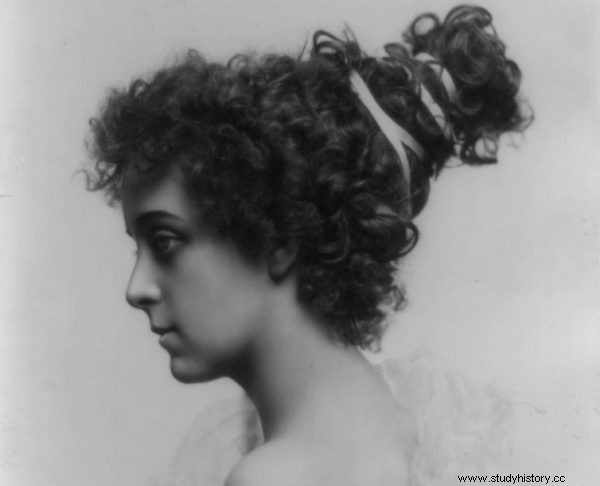
A stylish and complicated co-op? This is how the effect of burnt hair works (source:public domain).
The normal hairdressing procedure was to burn the hair with irons, which had a terrible effect on the structure of the hair. After such treatment, the locks often ended up in the hands of untrained hairdressers. No wonder that the ladies collected their hair after combing it and stored it in boxes, then they used them to style the missing hairstyles.
A permanent waving was also performed using a peculiar machine. To turn straight hair into sexy curls, strands were wound on hot rollers with clasps, connected by cables to a huge hair dryer. During this treatment lasting several hours, there were cases of not only burnt hair, but also skin burns (read more on this topic) .
This article has more than one page. Please select another one below to continue reading.Attention! You are not on the first page of the article. If you want to read from the beginning click here.
4. Shapes at least round
For a nineteenth-century lady, "loss of round shapes" or, in other words, "falling off the body" was what, for today's women, "unnecessary kilograms". The waist was supposed to be thin, but the corset was responsible for that. But pouring out breasts and shoulders , as well as the hands and face of the lady, should be plump and rounded.
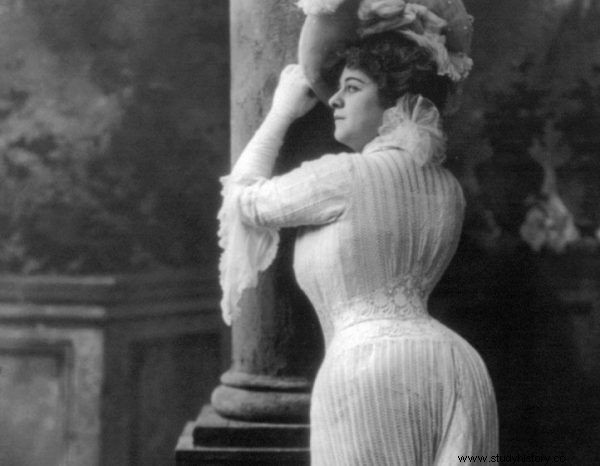
Today we would decide that this lady could use some sweets and slimming exercises. And she probably was on a fat diet to get more plump (source:public domain).
If the unfortunate lady had inadvertently lost weight, the evil could have been remedied. The recipe was simple - it was recommended not to have any problems, not to have a lot of exercise, to sleep for at least nine hours for a long time, for breakfast drink a cup of chocolate with Persian Salep mixed with two yolks every day, eat a little in a few hours white lamb, fatty veal or succulent beef.
It was also necessary to snack between meals - and these are potato means cooked in strong broths, groats with cream, almond milk, eggs in milk or chocolate creams. Daily relaxation baths were also encouraged, followed by a meal. After eating, it was necessary to lie down on the sofa, drink a cup of chocolate and sleep until dinner (read more on this topic) .
3. Skin as white as paper
The sun was the biggest enemy of beauty at the beginning of the 20th century, and protecting the skin from its destructive effects became a true obsession with women. As soon as summer was over, the tiniest traces of the tan had to disappear. A very fair complexion was a sign of gender delicacy, elegance and social standing.
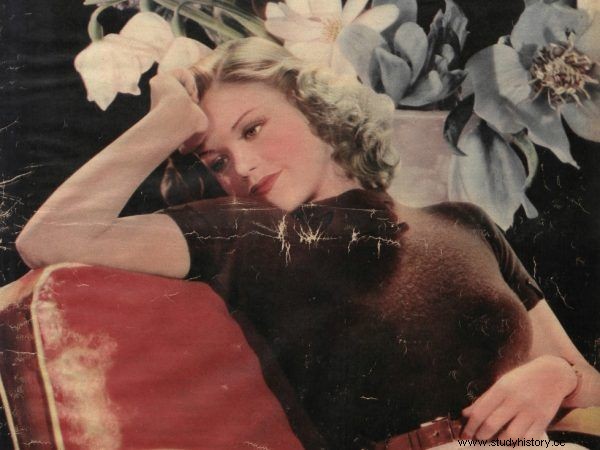
Alabaster complexion? Our great-grandmothers would probably treat it with hydrogen peroxide to make it even brighter (source:Światowid magazine, public domain).
It required intensive, sometimes several weeks long skin lightening treatments . Specially prepared mixtures based on lemon juice, hydrogen peroxide or parsley were regularly rubbed into the faces, arms and hands. Only a completely "whitened" woman could start to think about appearing in the salons.
In addition to substances that were supposed to help maintain alabaster pallor, another trick was used. Where nature refused to give the ladies the nets, they helped each other with ... watercolor paints. They should have been used because, thanks to dilution with water, they did not draw too clear lines (read more on this topic) .
2. No makeup
Even at the end of the 19th century, the expressive way of emphasizing the beauty was considered vulgar. Lipstick lips, flushed cheeks and tinted eyebrows were associated with the image of a prostitute. Lipstick, in a form similar to the one we know now, was on sale not earlier than in 1915.
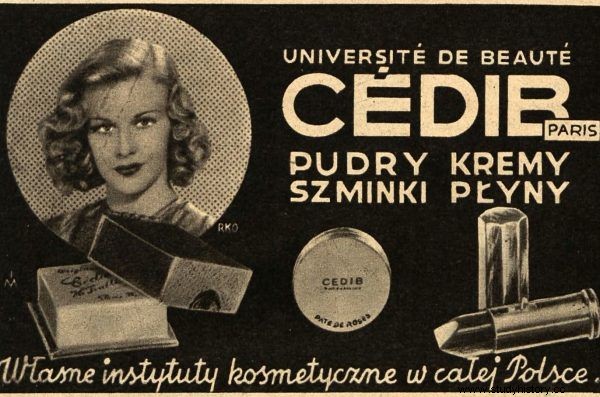
Only less than a century ago, make-up cosmetics ceased to be associated with the "oldest profession in the world" and began with a beautiful appearance (source:public domain).
Only silent movie actresses, looking for ways to emphasize facial expressions, reached for makeup, especially for the eyes. The seductive image of the stars, propagated on the silver screen, was quickly picked up by emancipated women.
It was not proper for women and ladies to paint themselves for a long time. When the teenage Magdalena Samozwaniec, getting ready for the ball, smeared her eyebrows black with soot, her mother disowned her in front of the company lady (read more about it) .
1. No freckles
When a photo of smiling teenage Kate Moss in a plume decorated the cover of British magazine "The Face" in 1990, absolutely no one bothered her freckles. The perception of the brown spots soon changed to the point that make-up specialists imitated them.
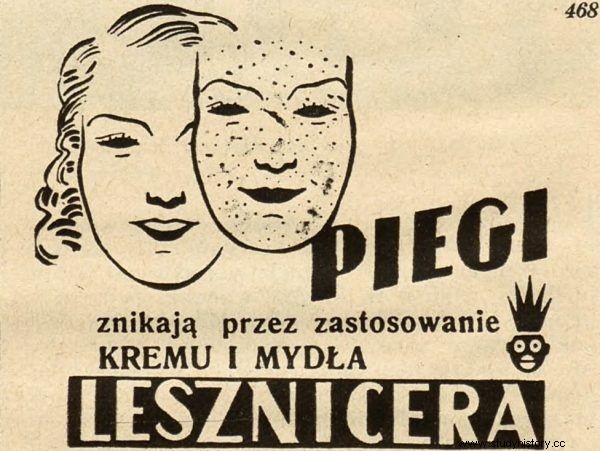
In the interwar period, freckles were considered a terrible beauty drawback. The magazines at that time were full of advertisements for removing these little dots (source:public domain).
However, in 1918, Kate would not have had the slightest chance of making a career. Her iconic photo would be considered by the ladies of the time as a village girl grazing a cow. No elegant woman could afford such a disfigurement! Both young girls and old ladies were ready to do anything just to remove freckles.
In each cosmetic guide, you could find methods of getting rid of the problem, often not very pleasant. Above all, fighting freckles required patience and diligence, but the numerous measures advertised in the press had poor results. Instead, you could use much simpler home remedies (read more about it) .
